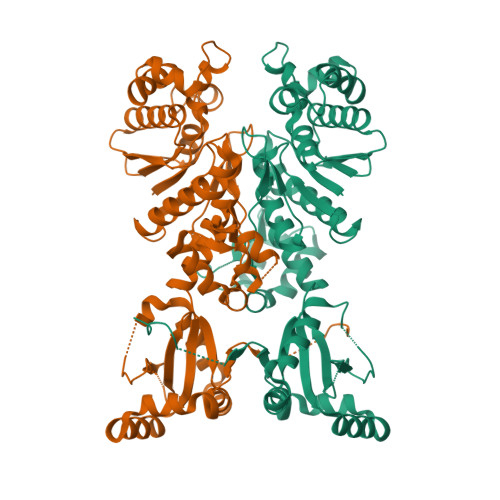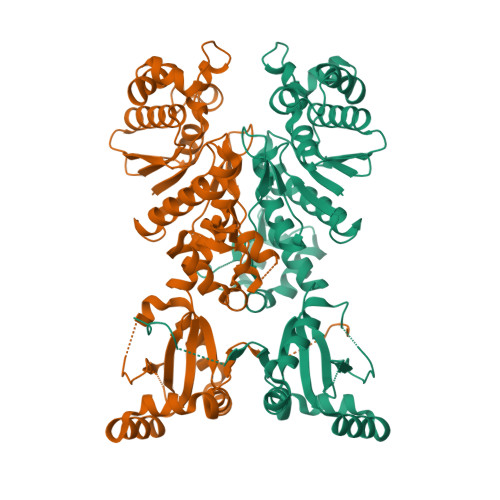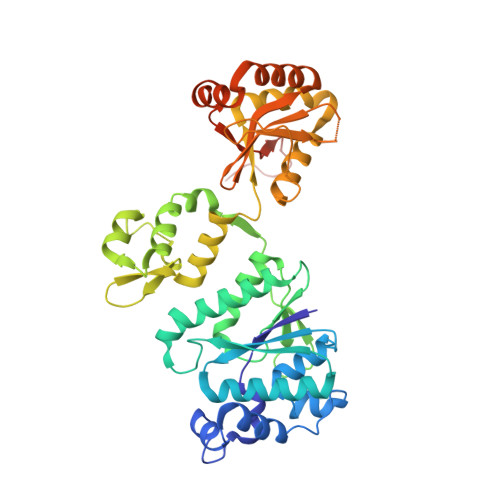Ribosomal stalk-captured CARF-RelE ribonuclease inhibits translation following CRISPR signaling.
Mogila, I., Tamulaitiene, G., Keda, K., Timinskas, A., Ruksenaite, A., Sasnauskas, G., Venclovas, C., Siksnys, V., Tamulaitis, G.(2023) Science 382: 1036-1041
- PubMed: 38033086
- DOI: https://doi.org/10.1126/science.adj2107
- Primary Citation of Related Structures:
8PHB, 8PHJ - PubMed Abstract:
Prokaryotic type III CRISPR-Cas antiviral systems employ cyclic oligoadenylate (cA n ) signaling to activate a diverse range of auxiliary proteins that reinforce the CRISPR-Cas defense. Here we characterize a class of cA n -dependent effector proteins named CRISPR-Cas-associated messenger RNA (mRNA) interferase 1 (Cami1) consisting of a CRISPR-associated Rossmann fold sensor domain fused to winged helix-turn-helix and a RelE-family mRNA interferase domain. Upon activation by cyclic tetra-adenylate (cA 4 ), Cami1 cleaves mRNA exposed at the ribosomal A-site thereby depleting mRNA and leading to cell growth arrest. The structures of apo-Cami1 and the ribosome-bound Cami1-cA 4 complex delineate the conformational changes that lead to Cami1 activation and the mechanism of Cami1 binding to a bacterial ribosome, revealing unexpected parallels with eukaryotic ribosome-inactivating proteins.
Organizational Affiliation:
Institute of Biotechnology, Life Sciences Center, Vilnius University, Saulėtekio av. 7, LT-10257 Vilnius, Lithuania.
















